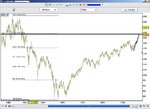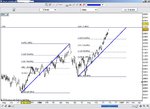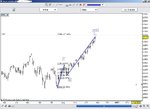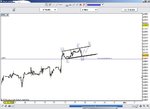mark twain uk
Established member
- Messages
- 618
- Likes
- 4
And this is what James Fergusson has to say about the housing slow down in the states:
The housing collapse will clobber spending
Even ignoring the inevitable knock-on consequences for the rest of the economy (what economists call the multiplier effects) such a fall in housing starts would be equivalent to about a $260bn drop in expenditure. So where could this shortfall be made up, in order to avoid the otherwise likely slowdown to recession?
The government sector can’t do it and there are no new tax cut programmes to look forward to. Corporate investment, as we’ve discussed before, is failing to deliver the growth. That leaves just the international sector. The way this usually happens is that the enormous trade deficit will have to reverse, either by the US exporting much more (this avenue sort of implicitly includes a big drop in the dollar) or by the US importing much less (which is a demand recession).
I don’t want to say that the disaster scenario is inevitable, since Bernanke has plenty of interest rate-cutting potential up his sleeve. But it does seem amazing that there’s so much complacency about.
One illustration of how relaxed the markets are is that the VIX put/call index shows premiums below 11%, compared to a 17-year range of 9% to 44%. The VIX is a measure of the volatility of the prices of options on the S&P500 and thus measures how nervous investors are – lower numbers show calm complacency and higher numbers reflect panic. Just four months ago at the time of the global sell-off, the VIX shot up as high as 24%.
The housing collapse will clobber spending
Even ignoring the inevitable knock-on consequences for the rest of the economy (what economists call the multiplier effects) such a fall in housing starts would be equivalent to about a $260bn drop in expenditure. So where could this shortfall be made up, in order to avoid the otherwise likely slowdown to recession?
The government sector can’t do it and there are no new tax cut programmes to look forward to. Corporate investment, as we’ve discussed before, is failing to deliver the growth. That leaves just the international sector. The way this usually happens is that the enormous trade deficit will have to reverse, either by the US exporting much more (this avenue sort of implicitly includes a big drop in the dollar) or by the US importing much less (which is a demand recession).
I don’t want to say that the disaster scenario is inevitable, since Bernanke has plenty of interest rate-cutting potential up his sleeve. But it does seem amazing that there’s so much complacency about.
One illustration of how relaxed the markets are is that the VIX put/call index shows premiums below 11%, compared to a 17-year range of 9% to 44%. The VIX is a measure of the volatility of the prices of options on the S&P500 and thus measures how nervous investors are – lower numbers show calm complacency and higher numbers reflect panic. Just four months ago at the time of the global sell-off, the VIX shot up as high as 24%.




